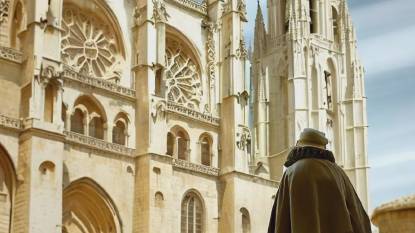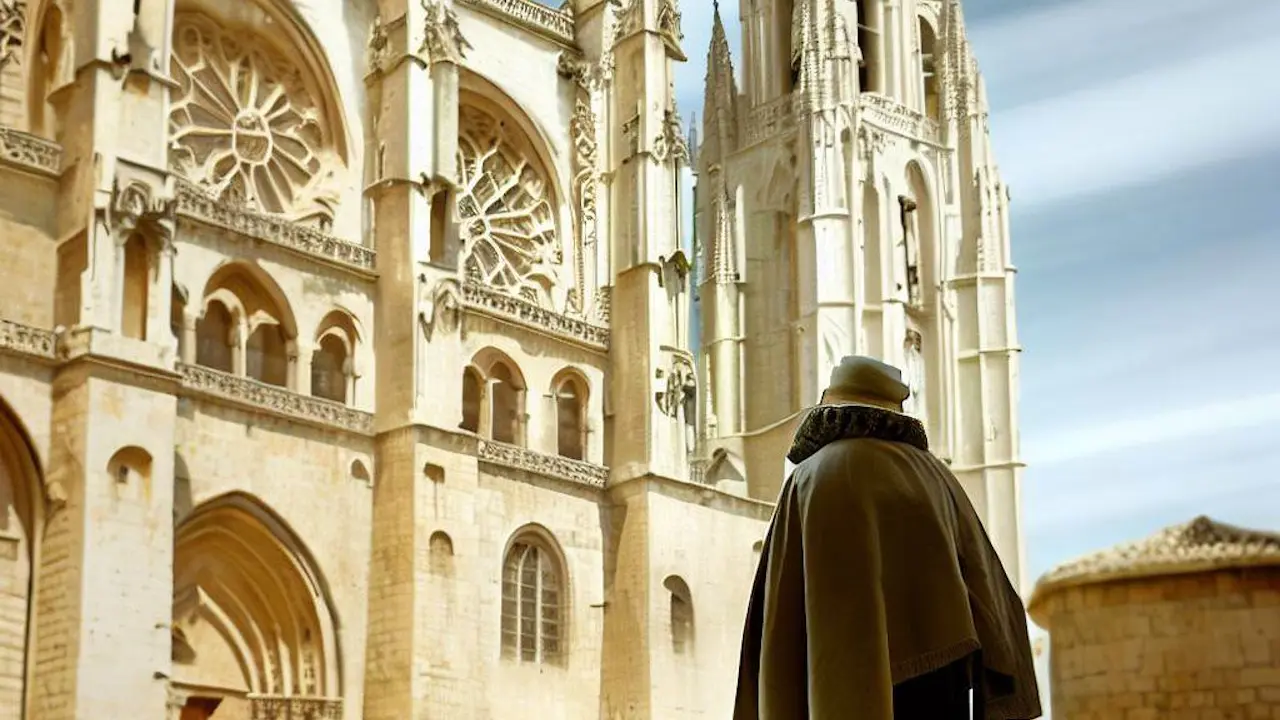
Camino Francés: San Juan de Ortega to Burgos Stage 12
Posted: | Updated:Reading time: 12 minutes
Camino Francés: San Juan de Ortega to Burgos Stage 12
Posted: | Updated:Reading time: 12 minutes
By: Simon Kemp, Editor
This section of your Camino Francés pilgrimage is about 27 kilometers (roughly 17 miles) long. The journey begins in the tranquil sanctuary of San Juan de Ortega. The stage is filled with a mix of forest trails, rural landscapes, and finally, the urban setting of Burgos.
Route Description
A. Detailed Breakdown of the Route
- San Juan de Ortega to Agés (3.5 km) Start your morning in San Juan de Ortega, a small hamlet named after a local saint. The first part of this stage is an easy stroll to Agés, a charming village with a small but beautifully preserved church.
- Agés to Atapuerca (3 km) The walk from Agés to Atapuerca passes through gentle hills and farmland. Atapuerca is renowned for its archaeological sites, where fossils of the earliest known hominids in Europe were discovered.
- Atapuerca to Cardeñuela Riopico (6.5 km) This stretch offers a climb to the Sierra de Atapuerca, followed by a descent into the village of Cardeñuela Riopico. The scenery is dotted with wheat fields and panoramic views.
- Cardeñuela Riopico to Burgos (14 km) The final stretch to Burgos begins with rural scenery that gradually transitions into suburban and then urban landscapes. Look forward to Burgos’ magnificent Gothic Cathedral, a UNESCO World Heritage Site.
B. Terrain and Elevation
The terrain on this stage is quite varied. Starting from San Juan de Ortega , you’ll encounter mostly dirt paths and some paved country roads. The highest elevation is at the Sierra de Atapuerca, after which the terrain gradually descends towards Burgos.
C. Points of Interest
- Church of San Juan de Ortega: Start your day at this peaceful 12th-century church dedicated to the saint who devoted his life to improving the Camino.
- Atapuerca archaeological sites: Visit the place where the oldest human fossils in Europe were discovered, with a museum showcasing the significant findings.
- Burgos Cathedral: End your day in Burgos, home to one of Spain’s most stunning Gothic cathedrals.
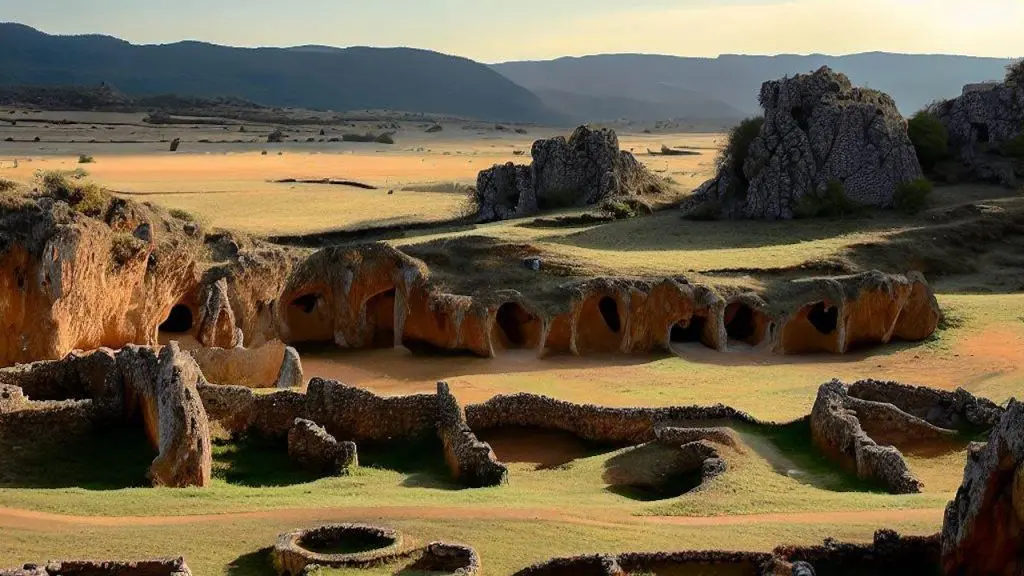
D. Potential Challenges
The main challenge on this stage is the climb up to the Sierra de Atapuerca. The path is steep but well-maintained, and the views from the top are well worth the effort.
E. Rest Stops
There are several towns and villages along this stage where you can rest, refill your water bottle, or grab a bite to eat. These include Agés, Atapuerca, and Cardeñuela Riopico. Once you reach Burgos, there are numerous cafes, restaurants, and bars to choose from. Enjoy your walk and buen camino!
Departure Point: San Juan de Ortega
San Juan de Ortega, nestled in the breathtaking landscapes of northern Spain, invites you to embark on a journey that intertwines history, spirituality, and natural splendor.
Location and History
Located in the province of Burgos, San Juan de Ortega enchants visitors with its serene setting along the revered Camino de Santiago pilgrimage route. The town derives its name from the venerated medieval figure, San Juan de Ortega, who played a pivotal role in the development of the famous pilgrimage. Pilgrims have treaded upon its ancient paths for centuries, seeking solace and enlightenment.
San Juan de Ortega’s history dates back to the 12th century when the saint, renowned for his architectural prowess, erected the magnificent Iglesia de San Juan de Ortega. This Romanesque marvel stands as a testament to the town’s rich heritage, showcasing architectural details that have withstood the test of time. Pilgrims from far and wide pause here to pay homage and find solace within its hallowed walls.
Points of Interest
San Juan de Ortega boasts captivating points of interest that illuminate its historical and spiritual significance. The Iglesia de San Juan de Ortega, with its imposing stone facade and graceful archways, beckons visitors to explore its sacred interior adorned with intricate artwork and religious symbolism. The subdued lighting and tranquil ambience create a serene space for contemplation and introspection.
Adjacent to the church, the Monastery of San Juan de Ortega stands as a sanctuary of respite for pilgrims. Originally constructed to provide shelter to weary travelers, the monastery continues to offer a haven for those traversing the Camino de Santiago. Its serene cloister and peaceful courtyard provide pilgrims with an opportunity to reflect and rejuvenate their spirits.
Pilgrim Hospitality
As a pivotal stop on the Camino de Santiago, San Juan de Ortega extends its warm hospitality to weary pilgrims. The town provides essential services, including comfortable albergues (hostels), where pilgrims can find rest and replenish their energy. The sense of community and camaraderie among fellow travelers fosters connections and shared experiences that enrich the pilgrimage journey.
The local community in San Juan de Ortega embraces pilgrims with open arms, offering assistance, guidance, and heartfelt hospitality. Volunteers and residents provide support, ensuring that pilgrims feel welcomed and cared for during their stay. The spirit of generosity and compassion resonates throughout the town, creating a supportive and uplifting atmosphere.
Natural Beauty
Surrounded by awe-inspiring landscapes, San Juan de Ortega offers a tranquil sanctuary for nature enthusiasts. Nestled amidst rolling hills, verdant forests, and idyllic meadows, the town provides a picturesque backdrop for relaxation and communion with nature. The enchanting beauty of the countryside and the soothing sounds of chirping birds and rustling leaves create a serene ambiance that soothes the soul.
The nearby Montes de Oca mountain range entices explorers with its captivating trails that wind through ancient woodlands and meandering streams. Pilgrims can immerse themselves in the natural wonders, experiencing the therapeutic effects of fresh air and the awe-inspiring vistas. Nature becomes an integral part of the pilgrimage, offering moments of serenity and introspection.
Spiritual Significance
San Juan de Ortega holds profound spiritual significance for pilgrims and those seeking a deeper connection to their faith. The town is renowned for the Miracle of the Light, a legendary event where San Juan de Ortega allegedly provided miraculous light to guide a lost pilgrim. This awe-inspiring tale serves as a beacon of hope and inspiration, reminding pilgrims of the miracles that can unfold on their sacred journey.
Pilgrims often pause at the Capilla de la Virgen de la Peña, a small chapel adorned with sacred relics, where they seek solace and offer prayers. The chapel’s serene atmosphere invites contemplation and introspection, providing a space for pilgrims to connect with their inner selves and the divine.
Conclusion
San Juan de Ortega, with its compelling history, spiritual significance, and idyllic surroundings, promises an extraordinary experience for visitors. Whether you are a pilgrim embarking on a transformative journey or a traveler seeking serenity in nature, San Juan de Ortega welcomes you with open arms. Discover the town’s historical treasures, embrace the warm hospitality of the community, and immerse yourself in the tranquility of the natural surroundings. San Juan de Ortega offers a profound pilgrimage experience that will leave you inspired, rejuvenated, and with cherished memories that will last a lifetime.
Camino Francés Diary: Route segment: 12
Sunday 8th October 2000
My leg and feet have kept me awake all night plus a minor fever. I decide that some days rest is required and order a taxi to take me to the next stop on my Camino Francés adventure, which is Burgos. It is a risk as I have already lost touch with Caroline and Ferdinand and as it turns out I will never see Geordie or Lisa again. I hope they are all right. The taxi does not take long and drops me right in the center of Burgos.
It is a city which is said to be very aristocratic and that is confirmed by the airs and manners of the Spaniards I see
walking around. They are all well dressed and look well off and a bit aloof. They are all dressed for autumn and the site of a big Scotsman in shorts is obviously too much for them and some of them are openly gaping at me. I don’t mind. It was sunny and as I only have the one pair of jeans I want to save them for evenings or when I have to be presentable. At this point it might be worth checking over my Camino packing list for next time!
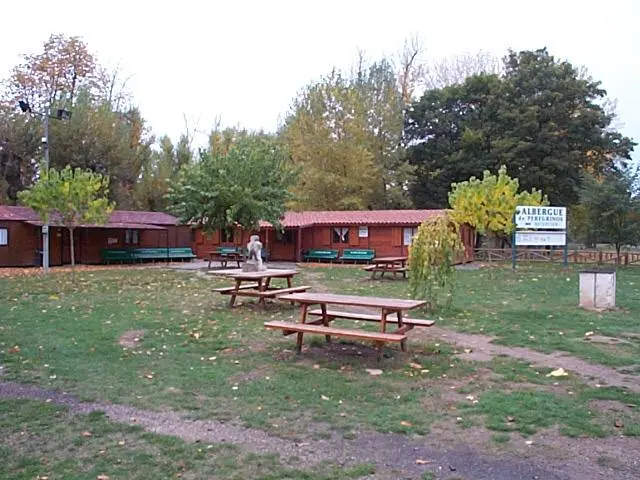
I see a hotel close by and check in. The room is very basic and smells funny but it will do. It has only a half bath, which I
fill with hot water immediately. A long soak in hot water does my leg a great help. So much so that I feel like walking around afterwards. I go to find the refuge and have some difficulty finding it. I figure that my friends will also have difficulty and as Burgos
takes at least an hour and a half to walk through I reckon that they would appreciate a friendly face telling them that the refuge is not far.
I start walking the Camino path in reverse and eventually meet up with Carlos and Olga and later on Frederick who as usual has a woman helping him. As I thought, they are glad to see me and to know the refuge is only 15 to 20 minutes away. That is the last I will ever see of them also. If they read this I want them to know how much I valued their friendship even though it was brief. I continue walking but do not meet anyone else I know. I had hoped to meet Ophelia, Margaux and Thierry but they won’t arrive until tomorrow, unknown to me.
I go back to the hotel and wash my clothes. If you have seen the film “Crocodile Dundee” then my room was just like his hotel room in New York with the cloths strung across the room to dry. And no, there was no bidet so I did not have to shout out the window.
I do some work on these web pages and give up by midnight. The following day I have a long lie in and in the afternoon go back to the refuge again to see if I know anyone. To my delight Margaux and the others are there and we exchange smiles all round. At that point I decide it is time to start walking again and agree to meet them next morning. They want to go out for a meal but Thierry is having his feet massaged by the gorgeous Margaux and a team of horses could not drag him away.
I joke with him about it the next day. It seems that a bit of romance is in the air and a parting between them later in Frómista looks painful to me. I admit I was somewhat jealous of them. I eventually go out for the meal with Ferdinand and a German girl whose name I did not catch. I could see a bond developing between them also and so left them to themselves early.
Destination: Burgos
Welcome to Burgos, a captivating town in northern Spain that seamlessly blends its rich history, architectural wonders, and vibrant culture.
Location and History
Nestled in the province of Burgos, this town enjoys a strategic location along the Camino de Santiago pilgrimage route. Situated on the banks of the Arlanzón River, Burgos has been a cultural and commercial center for centuries. Its historical significance dates back to the Middle Ages, when it flourished as the capital of the Kingdom of Castile.
The historic center of Burgos, known as the Ciudad Vieja, is a UNESCO World Heritage site. This designation recognizes its architectural beauty and historical importance. As you stroll through its cobblestone streets, you’ll encounter magnificent buildings that showcase various architectural styles, including Gothic, Renaissance, and Baroque.
Points of Interest
Burgos boasts remarkable points of interest that showcase its cultural and historical heritage. The Burgos Cathedral, also known as the Cathedral of Santa María, is one of the town’s most iconic landmarks. This magnificent Gothic masterpiece stands as a testament to the town’s religious devotion and architectural prowess. Inside, visitors are awed by its soaring vaulted ceilings, intricate stone carvings, and stunning stained glass windows. The Chapel of the Constable, a masterpiece of Spanish Gothic art, is a highlight of the cathedral.
Another notable attraction is the Cartuja de Miraflores, a Carthusian monastery located just outside the town center. This tranquil retreat is renowned for its exquisite Gothic architecture and houses the tomb of King John II of Castile and his wife, Isabella of Portugal. The monastery’s stunning altarpiece, crafted by Gil de Siloé, is a masterpiece of Spanish Renaissance art.
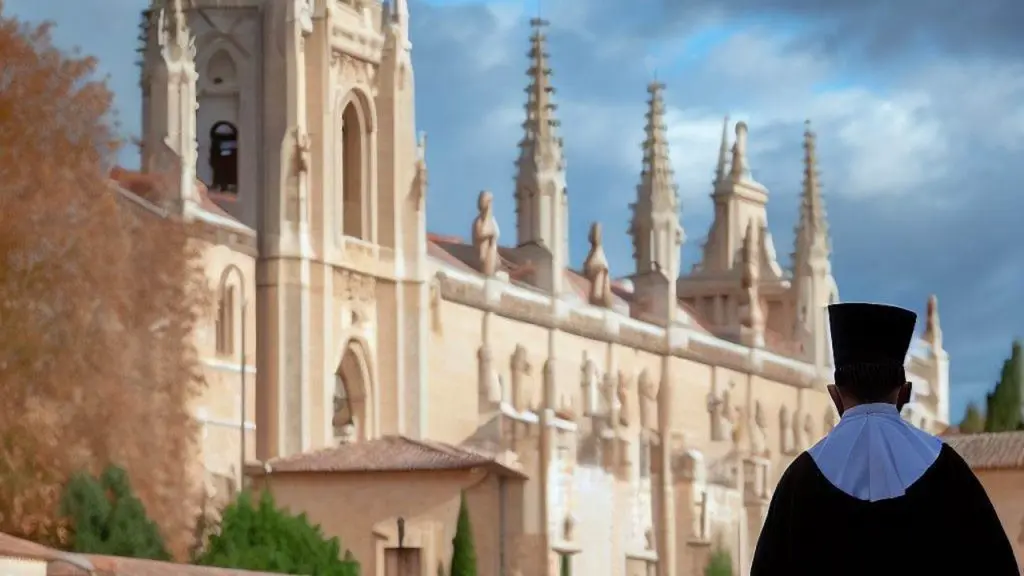
Cultural Delights
Burgos is a hub of cultural activity, offering a myriad of experiences for visitors. The town hosts the annual Festival de Burgos, a celebration of music, dance, and theater that attracts artists and performers from around the world. This vibrant event features a diverse program of concerts, ballets, theatrical performances, and art exhibitions, providing a rich cultural experience for locals and visitors alike.
For those interested in the region’s prehistoric past, the Museum of Human Evolution offers a fascinating journey through time. Located in a modern building designed by Spanish architect Juan Navarro Baldeweg, the museum showcases archaeological finds from the nearby Atapuerca archaeological site. Visitors can explore interactive exhibits, view ancient fossils and artifacts, and learn about the evolution of humankind.
Gastronomic Delicacies
Known for its culinary prowess, Burgos tantalizes the taste buds with its gastronomic delights. The town is famous for its morcilla, a flavorful blood sausage that is a staple of traditional Castilian cuisine. Made with ingredients such as rice, onions, and spices, the morcilla of Burgos has a unique and rich flavor that is savored by locals and visitors alike. Other culinary specialties of the region include succulent roast lamb, hearty stews, and the famous cheese from the nearby town of Aranda de Duero.
To complement the delectable cuisine, Burgos is renowned for its fine wines. The town lies within the prestigious Ribera del Duero wine region, known for producing exceptional red wines. Wine enthusiasts can indulge in tastings, visit local wineries, and savor the rich and complex flavors of the region’s acclaimed vintages.
Vibrant Atmosphere
Burgos exudes a vibrant atmosphere, with its lively streets, bustling plazas, and welcoming locals. The Plaza Mayor, located at the heart of the town, serves as a gathering place for both locals and
visitors. Its charming architecture, bustling cafes, and lively ambiance create an inviting space to relax, people-watch, and soak in the town’s vibrant energy.
Exploring the winding streets of the historic center, you’ll encounter charming shops, boutiques, and traditional markets. The Mercado Norte, a vibrant food market, offers a sensory delight with its stalls brimming with fresh produce, local delicacies, and artisanal products. Immerse yourself in the local culture as you sample regional specialties, chat with friendly vendors, and embrace the authentic flavors of Burgos.
Conclusion
Burgos, with its rich history, architectural marvels, cultural offerings, and mouthwatering cuisine, invites you to embark on a memorable journey. Discover the grandeur of the Burgos Cathedral, immerse yourself in the town’s cultural festivals, savor the flavors of its traditional cuisine, and embrace the vibrant energy of the local atmosphere. Burgos promises an experience that combines history, culture, and gastronomy, leaving you with cherished memories and a deep appreciation for this remarkable town.
